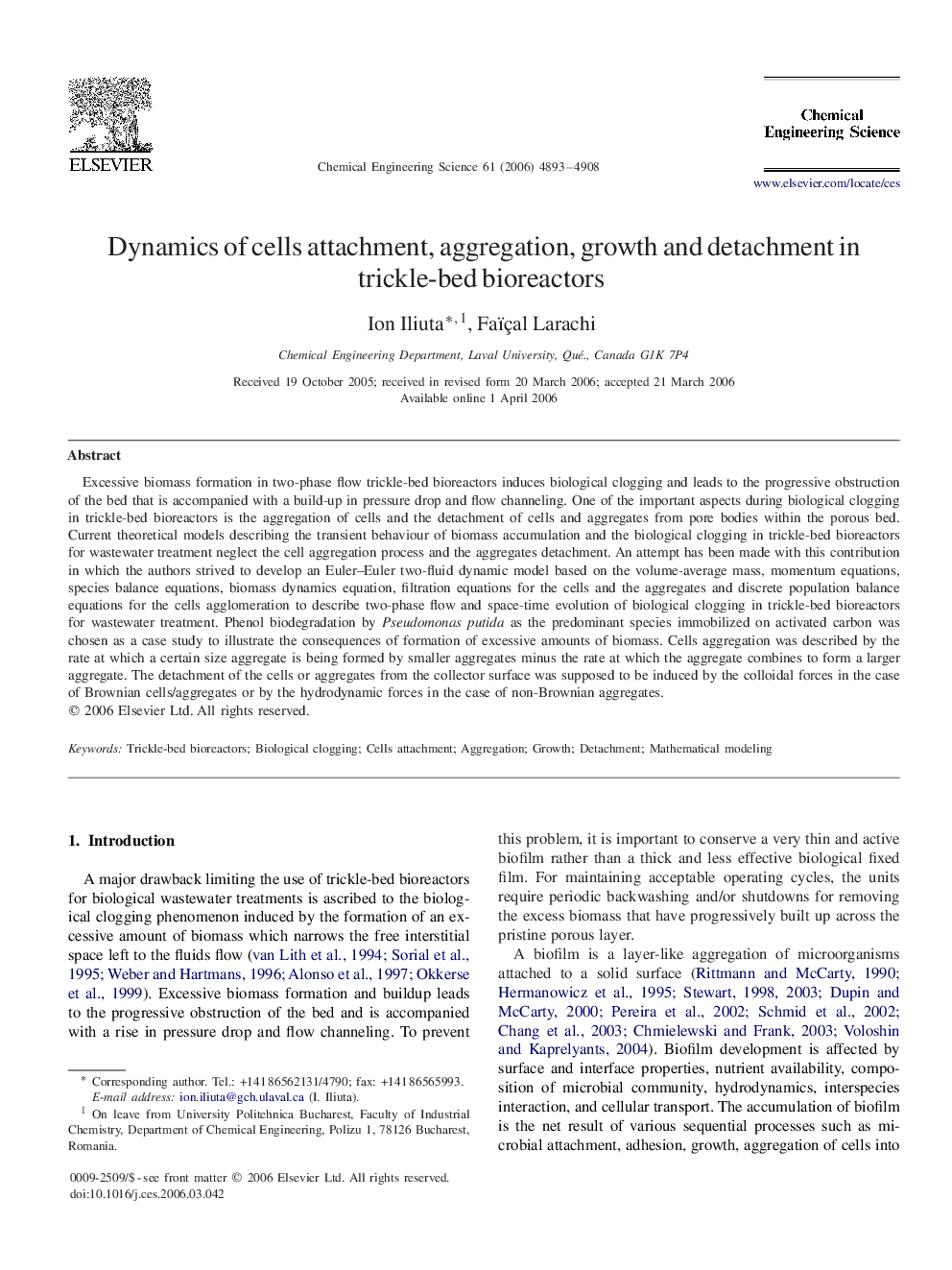| کد مقاله | کد نشریه | سال انتشار | مقاله انگلیسی | نسخه تمام متن |
|---|---|---|---|---|
| 160629 | 457090 | 2006 | 16 صفحه PDF | دانلود رایگان |

Excessive biomass formation in two-phase flow trickle-bed bioreactors induces biological clogging and leads to the progressive obstruction of the bed that is accompanied with a build-up in pressure drop and flow channeling. One of the important aspects during biological clogging in trickle-bed bioreactors is the aggregation of cells and the detachment of cells and aggregates from pore bodies within the porous bed. Current theoretical models describing the transient behaviour of biomass accumulation and the biological clogging in trickle-bed bioreactors for wastewater treatment neglect the cell aggregation process and the aggregates detachment. An attempt has been made with this contribution in which the authors strived to develop an Euler–Euler two-fluid dynamic model based on the volume-average mass, momentum equations, species balance equations, biomass dynamics equation, filtration equations for the cells and the aggregates and discrete population balance equations for the cells agglomeration to describe two-phase flow and space-time evolution of biological clogging in trickle-bed bioreactors for wastewater treatment. Phenol biodegradation by Pseudomonas putida as the predominant species immobilized on activated carbon was chosen as a case study to illustrate the consequences of formation of excessive amounts of biomass. Cells aggregation was described by the rate at which a certain size aggregate is being formed by smaller aggregates minus the rate at which the aggregate combines to form a larger aggregate. The detachment of the cells or aggregates from the collector surface was supposed to be induced by the colloidal forces in the case of Brownian cells/aggregates or by the hydrodynamic forces in the case of non-Brownian aggregates.
Journal: Chemical Engineering Science - Volume 61, Issue 15, August 2006, Pages 4893–4908